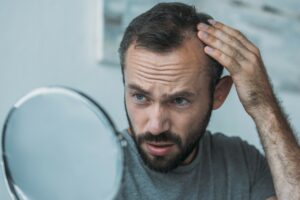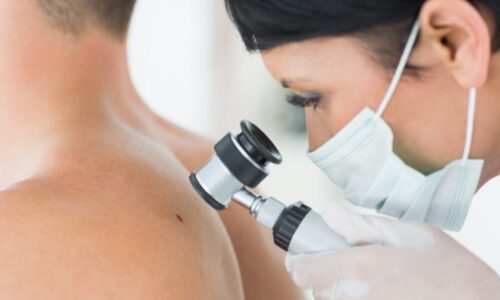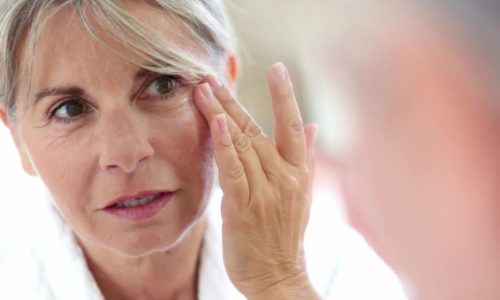Is there a treatment for hair loss? |

In my most recent health tip I discussed the possible causes of hair loss. If you have treated all the potential “reversible causes” of hair loss that are within our control (such as optimizing your medications, treating scalp infections, reducing stress, avoiding certain hairstyles or treatments, eating healthfully, and treating medical conditions that have the unwanted side effect of hair loss), then we are left with “uncontrolled” hair loss (also known as genetic, androgenic, or male/female pattern baldness) – and the various treatments available for it.
- Medications (there are only two FDA-approved medications for hair loss)
- Rogaine (minoxidil) for men and women. Brief summary from Mayo Clinic: “Minoxidil is an over-the-counter liquid or foam that you rub into your scalp twice a day to grow hair and to prevent further hair loss. It may be used by men and women. With this treatment, some people experience hair regrowth, a slower rate of hair loss or both. The effect peaks at 16 weeks and you need to keep applying the medication to retain benefits.”Scientists are not certain how minoxidil works to reduce hair loss, but is effective as a mild blood pressure-reducing medicine that dilates blood vessels. Perhaps the improved blood flow nourishes hair follicles and keeps them healthy longer. For women, a combination of low dose oral minoxidil (0.25 mg daily) and spironolactone (25 mg daily) has been shown to significantly improve hair growth, reduce shedding and improve hair density.Minoxidil is available as 2% and 5% solutions; the stronger preparation is more likely to irritate and may cause undesirable hair growth unintentionally on areas other than the scalp.
- Propecia (finasteride) for men only
“It’s taken daily in pill form. Many men taking finasteride experience a slowing of hair loss, and some may show some new hair growth. You need to keep taking it to retain benefits. Rare side effects of finasteride include diminished sex drive and sexual function and an increased risk of prostate cancer. Women who are or may be pregnant need to avoid touching crushed or broken tablets.”Propecia works by blocking the breakdown of testosterone, thus allowing more to circulate in the bloodstream. Testosterone boosts hair growth.
- Surgery
Most commonly referred to as “hair plugs,” a surgeon or dermatologist removes tiny pieces of skin, each containing a few hairs, from the back or sides of the scalp and then implants the plugs into the bald sections of the scalp. Surgical procedures to treat baldness are expensive and can be painful. Possible risks include infection and scarring. Also, if balding continues, the new hairs may look misplaced (at a hairline far forward of the advancing hair loss.) - Laser Treatment
Low level laser therapy (LLLT) uses devices with diodes that emit red light (wavelength 630-670 nanometers), or infrared radiation, and are available as:- in-salon hoods or overhead panels
- bonnet or head caps
- hand-held devices.
To see results, laser treatments are completed two to three times a week for 12 to 26 weeks. Some salons recommend a year of treatments. There is some evidence that this therapy works by increasing blood flow to the hair follicles. However, it is a controversial therapy in the medical community and its efficacy has not been demonstrated convincingly in independent trials (in other words, mostly laser manufacturers say they work).
- Wigs & Hairpieces
The final “treatment” option is simply to cover up the baldness with hair alternatives. In cases where hair loss is due to a medical condition (like cancer), the cost of a wig may be covered by insurance. - Cosmetic Camouflages include colored hair sprays (to cover thinning areas on the scalp), and hair bulking fibre powder.
References
http://www.mayoclinic.org/diseases-conditions/hair-loss/basics/treatment/con-20027666
https://www.dermnetnz.org/topics/low-dose-laser-therapy-for-hair-loss/
https://www.dermnetnz.org/topics/female-pattern-hair-loss/
If you have any more questions just Ask Hanna, our health advisors are here to help.
Dr. Val Jones MD – Health Tip Content Editor
Image: ©Shutterstock / LightField Studios








